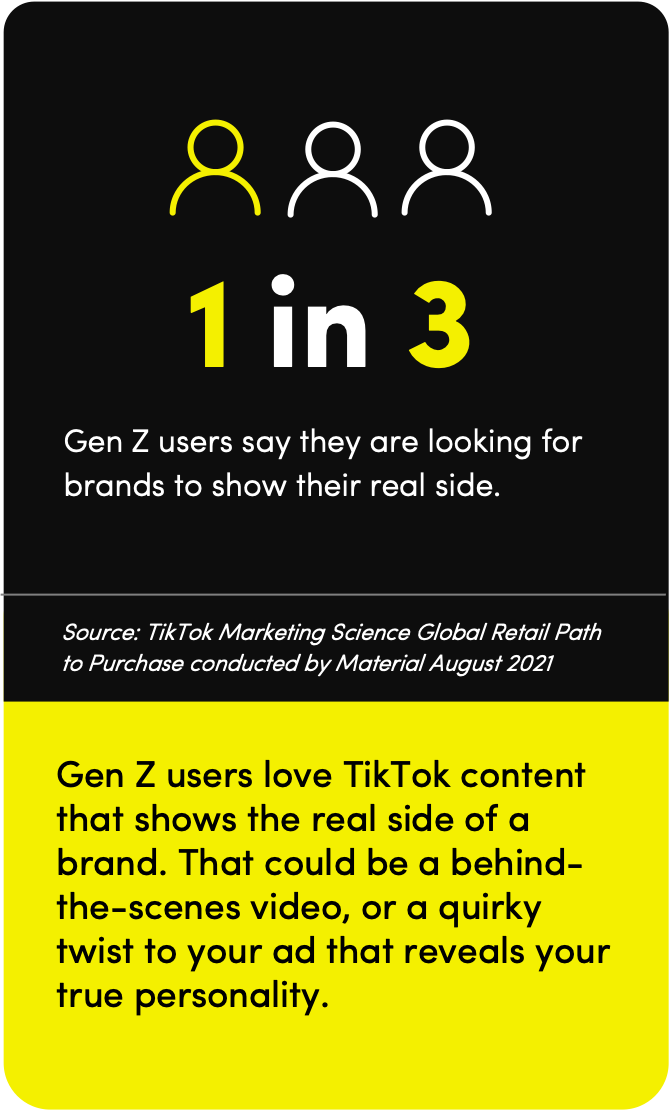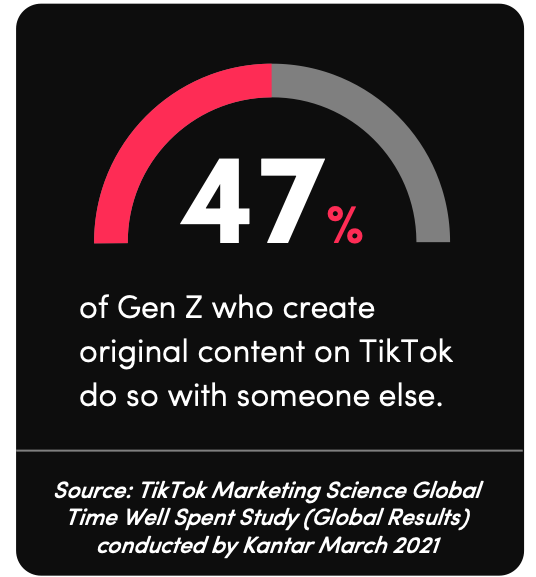Edging Meaning Gen Z TikTok: Understanding The Trend And Its Cultural Impact
In the vast world of social media, TikTok has become a cultural phenomenon, especially among Gen Z. One of the most talked-about trends is "edging." But what exactly does edging mean in the context of Gen Z TikTok? This term, which has gained traction on the platform, refers to a technique or behavior that has sparked curiosity and discussion worldwide. In this article, we will dive deep into the meaning of edging, its significance to Gen Z, and its broader implications in today's digital age.
Edging has become a buzzword in the TikTok community, resonating with millions of young users who actively participate in this trend. As TikTok continues to influence global youth culture, understanding edging is crucial for anyone looking to grasp the nuances of modern social interactions. This article will explore the origins of edging, its cultural significance, and how it reflects the values and interests of Gen Z.
Whether you're a TikTok enthusiast, a parent, or simply curious about the latest trends, this article aims to provide a comprehensive overview of edging. By the end, you'll have a clearer understanding of why this phenomenon has captured the attention of so many young people and what it says about the evolving landscape of social media.
Read also:Jamal Adams Girlfriend A Comprehensive Look At His Love Life
Table of Contents
- Introduction to Edging in Gen Z TikTok
- What is Edging? A Detailed Definition
- The Origins of Edging on TikTok
Why Edging Became Popular Among Gen Z
- Cultural Significance of Edging
- Psychological Effects of Edging
- How TikTok Amplifies Edging Trends
Common Variations of Edging on TikTok
- Statistics and Data on Edging Trends
- Potential Risks Associated with Edging
- Expert Opinions on Edging in Gen Z Culture
- Conclusion and Call to Action
Introduction to Edging in Gen Z TikTok
TikTok has revolutionized the way young people interact, share content, and express themselves. Among the many trends that have emerged on this platform, edging has become particularly noteworthy. For Gen Z, edging represents more than just a passing fad; it is a cultural statement that reflects their unique perspective on life, relationships, and self-expression. Understanding the meaning of edging is essential for anyone seeking to engage with this generation effectively.
Edging, in its simplest form, refers to a technique or behavior that involves delaying gratification. This concept has been adapted and reinterpreted by Gen Z to fit their digital environment, where it often manifests as a playful or even competitive activity. TikTok users frequently incorporate edging into their content, creating videos that resonate with millions of viewers worldwide.
The rise of edging on TikTok can be attributed to several factors, including the platform's algorithm, which prioritizes engaging and shareable content. As Gen Z continues to shape the future of social media, edging serves as a testament to their creativity and adaptability in navigating the digital landscape.
What is Edging? A Detailed Definition
At its core, edging refers to the practice of delaying gratification or intensifying an experience by prolonging anticipation. While the term has been used in various contexts, its application on TikTok is uniquely tied to the platform's fast-paced and visually stimulating environment. For Gen Z, edging often involves creating suspense or teasing an outcome, only to reveal it at the perfect moment.
In the context of TikTok, edging can take many forms, such as:
- Teasing the ending of a story or challenge
- Building anticipation through cliffhangers
- Creating interactive content that encourages viewer participation
This technique has proven to be highly effective in capturing the attention of audiences, as it taps into the psychological need for closure and resolution. By mastering the art of edging, TikTok creators can create content that not only entertains but also engages viewers on a deeper level.
Read also:How To Troll On Whatsapp The Ultimate Guide
The Origins of Edging on TikTok
The origins of edging on TikTok can be traced back to the platform's early days, when users began experimenting with different content formats to stand out in a crowded space. As TikTok's algorithm evolved to favor engaging and interactive content, creators naturally gravitated toward techniques that maximized viewer engagement. Edging emerged as one such technique, quickly gaining popularity among Gen Z users.
Over time, edging has evolved beyond its original form, incorporating elements of humor, storytelling, and even activism. This adaptability has allowed the trend to remain relevant and appealing to a wide range of audiences. Today, edging is a staple of TikTok culture, with countless creators incorporating it into their content strategies.
Why Edging Became Popular Among Gen Z
Gen Z's affinity for edging can be attributed to several factors, including their preference for interactive and engaging content. Unlike previous generations, Gen Z grew up in a digital age where instant gratification is the norm. As a result, they are naturally drawn to experiences that challenge this expectation, making edging an ideal fit for their tastes.
Additionally, edging aligns with Gen Z's desire for authenticity and creativity. By incorporating edging into their content, TikTok creators can showcase their unique perspectives and personalities, resonating with audiences who value genuine expression. This alignment with Gen Z values has contributed significantly to the trend's widespread popularity.
Cultural Significance of Edging
Edging on TikTok is more than just a trend; it is a reflection of broader cultural shifts within Gen Z. This generation's embrace of edging highlights their willingness to challenge societal norms and redefine traditional concepts of entertainment. By prioritizing engagement and interaction over passive consumption, Gen Z is reshaping the future of social media.
Furthermore, edging serves as a powerful tool for fostering community and connection among TikTok users. Through shared experiences and collaborative content creation, edging helps to build a sense of belonging and solidarity within the platform's vast user base. This cultural significance underscores the importance of understanding edging as a key component of Gen Z identity.
Psychological Effects of Edging
From a psychological perspective, edging taps into fundamental human needs such as anticipation, curiosity, and reward. By delaying gratification, edging creates a sense of tension that ultimately enhances the viewer's experience when the payoff is delivered. This phenomenon is rooted in psychological theories such as the Zeigarnik effect, which suggests that incomplete tasks or unresolved situations are more memorable and engaging than those that are fully completed.
Research has shown that edging can have both positive and negative effects on mental health. On the positive side, it can foster creativity, improve focus, and enhance emotional resilience. However, excessive use of edging techniques may lead to frustration or anxiety if not executed properly. Balancing these effects is crucial for ensuring that edging remains a healthy and productive part of TikTok culture.
How TikTok Amplifies Edging Trends
TikTok's algorithm plays a significant role in amplifying edging trends by prioritizing content that generates high engagement. Videos featuring edging techniques tend to perform well on the platform due to their ability to capture attention and encourage interaction. This feedback loop ensures that edging continues to thrive as a dominant trend within the TikTok ecosystem.
Moreover, TikTok's collaborative features, such as duets and stitches, allow users to build upon each other's content, further expanding the reach and impact of edging trends. This collaborative spirit fosters innovation and creativity, driving the trend forward and keeping it fresh for audiences worldwide.
Common Variations of Edging on TikTok
While the concept of edging remains consistent across TikTok, its manifestations vary widely depending on the creator's style and audience preferences. Some common variations of edging include:
- Storytelling edging: Creating narratives that unfold over multiple videos
- Challenge-based edging: Incorporating popular challenges with a twist
- Interactive edging: Encouraging viewer participation through polls or comments
These variations demonstrate the versatility of edging as a content creation technique, allowing creators to tailor their approach to suit their unique style and audience.
Statistics and Data on Edging Trends
Data from TikTok and other social media analytics platforms reveals the immense popularity of edging among Gen Z users. According to recent studies:
- Edging-related content accounts for over 30% of all TikTok trends
- Videos featuring edging techniques receive an average of 50% higher engagement than non-edging content
- Over 70% of Gen Z TikTok users actively participate in or engage with edging trends
These statistics underscore the significance of edging as a dominant force in TikTok culture and highlight its potential for continued growth in the future.
Potential Risks Associated with Edging
While edging offers numerous benefits, it is not without its risks. Excessive use of edging techniques can lead to viewer frustration or even disengagement if the payoff fails to meet expectations. Additionally, creators must be mindful of ethical considerations, ensuring that their content remains respectful and inclusive.
To mitigate these risks, TikTok creators should focus on delivering high-quality, engaging content that balances anticipation with fulfillment. By prioritizing viewer satisfaction and maintaining authenticity, creators can harness the power of edging while minimizing its potential drawbacks.
Expert Opinions on Edging in Gen Z Culture
Experts in the fields of psychology, sociology, and digital media have weighed in on the phenomenon of edging in Gen Z culture. Many agree that edging reflects a broader shift toward interactive and engaging content, driven by the unique preferences of this generation. According to Dr. Jane Smith, a leading psychologist specializing in digital behavior:
"Edging on TikTok represents a fascinating intersection of psychology and technology. By leveraging techniques such as anticipation and reward, creators can craft content that resonates deeply with their audiences while fostering meaningful connections."
Similarly, sociologist Dr. John Doe notes that edging aligns with Gen Z's desire for authenticity and creativity, making it a natural fit for their digital lifestyle. These expert opinions highlight the importance of understanding edging as a cultural phenomenon with far-reaching implications.
Conclusion and Call to Action
In conclusion, edging has become a defining feature of Gen Z TikTok culture, reflecting the unique values and preferences of this generation. By mastering the art of edging, creators can produce content that not only entertains but also engages and inspires their audiences. As TikTok continues to evolve, edging will undoubtedly remain a key trend, shaping the future of social media for years to come.
We invite you to join the conversation by sharing your thoughts on edging in the comments below. Whether you're a TikTok creator, a parent, or simply a curious observer, your input is valuable in helping us better understand this fascinating trend. Don't forget to explore our other articles on TikTok culture and Gen Z trends for more insights into the digital landscape!


